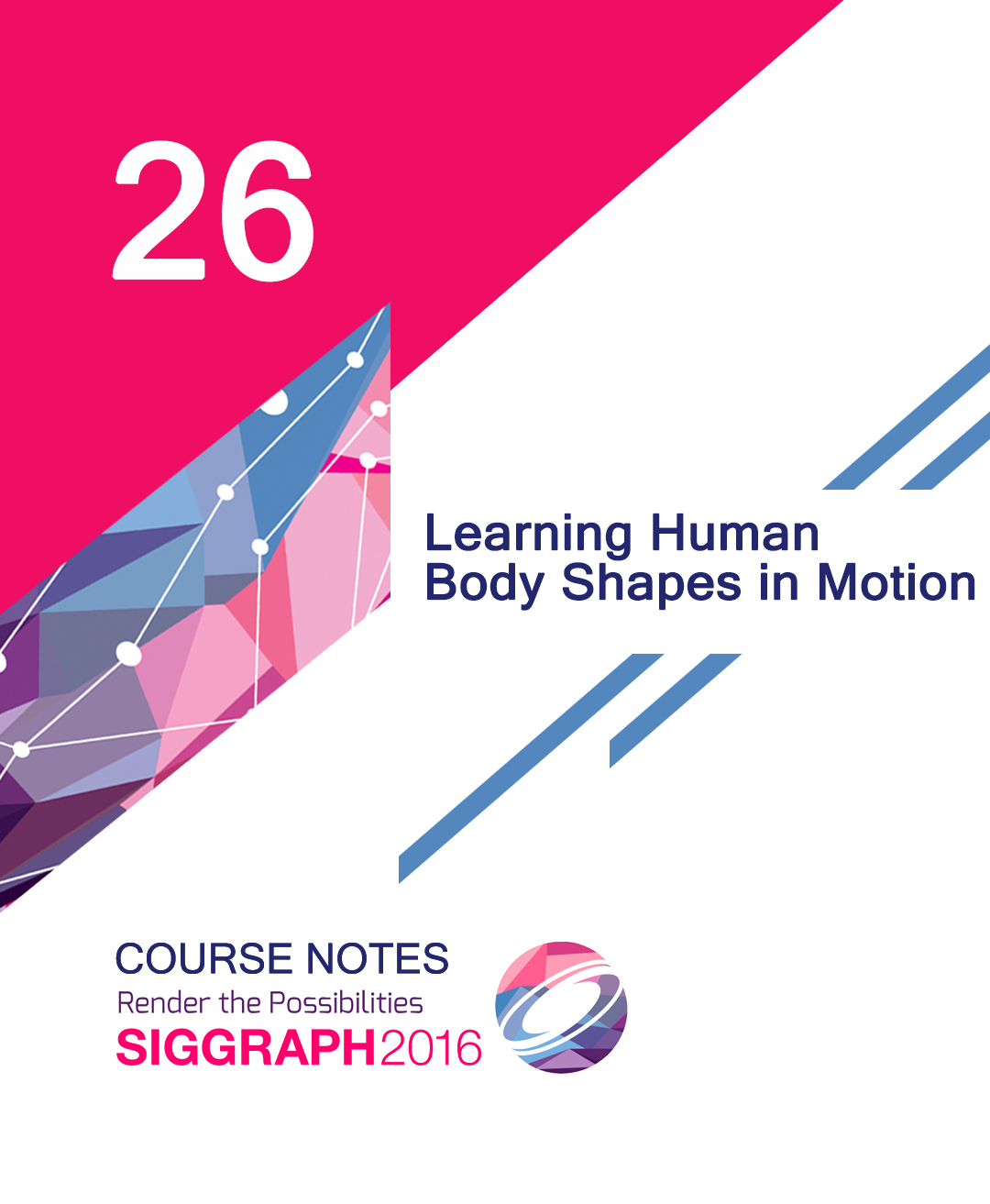“Learning Human Body Shapes in Motion” by Romero, Pons-Moll, Mahmood and Bogo
Conference:
Type(s):
Title:
- Learning Human Body Shapes in Motion
Organizer(s):
Presenter(s)/Author(s):
Entry Number: 26
Abstract:
Prerequisites
Recommended: basic knowledge of linear algebra, some basic statistics, and rotation matrices. No prior background in 3D modeling or animation is assumed.
Level
Intermediate
Who Should Attend
Computer graphics students and researchers who need a 3D body model for animation, pose estimation, training, etc.
Description
The 3D representation of human form has been central to human art for 40,000 years. While the first 3D bodies were carved from mammoth tusk, the present and future require 3D shapes that look and move realistically. Currently, representing body shape with high realism requires expert hand modeling and animation. The advent of 3D scanning creates the opportunity to learn realistic models of body shape and how it deforms with motion.
But scanning is just the beginning. Building a model requires putting scans into accurate correspondence, choosing a representation for shape, and optimizing the model to fit training data. This course presents a “how to” tutorial covering these key topics:
• Data capture
• Mesh alignment
• Choice of shape representation
• Dealing with variations in body shape
• Modeling articulation
• Capturing and modeling soft-tissue motions
• Fitting models to data
• Applications in VR, animation, fashion, and psychology
The tutorial is taught by a team of researchers who have spent years developing 3D human-body models for vision, graphics, and learning. It includes a hands-on section in which attendees create a body, edit its shape, and animate it in motion. This state-of-the art 3D body model can be readily used for post-conference research purposes.





